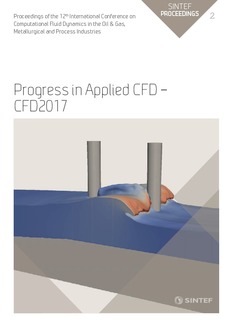| dc.description.abstract | In subsea components such as Production Trees (XT) where the production flow path is machined out of steel blocks, the flow changes direction abruptly at blind tees or sharp elbows, causing increased erosion risks compared to a piping design. The risk of erosion is largely controlled by the depth of the cavity inside a flow-turning element, which may vary between zero for a sharp elbow and more than one time the Inner Diameter (ID) for a full blind tee. In this paper, a comparison between the erosion response of three different flow-turning elements is performed by using Computational Fluid Dynamics (CFD) with transient particle tracking: a blind tee with a deep cavity, a blind tee with a shallow cavity (depth < 1 ID) and a sharp elbow. The DNVGL-RP-O501 (2015) erosion response model is implemented in the simulations with a modification to the angle function which aims at filtering out erosion results due to impacts at low angle. The transient formulation causes the sand particles to be dispersed naturally by the flow field, yielding time-averaged realistic erosion results without any need for area-averaging or numerical dispersion schemes. The CFD model is successfully benchmarked against the DNVGLRP- O501 (2015) guidelines for standard piping components such as bends. The simulation results reveal that the shallow cavity blind tee creates a very high risk of erosion inside the cavity which is not predicted by the guidelines, with peak erosion rates one order of magnitude higher than for a sharp elbow. This is observed both for a gas and liquid production case, and a physical explanation for this behaviour is provided based on an analysis of the transient flow and sand particle dynamics. Although further numerical sensitivities and experimental evidence are required to confirm this result, it is advised to avoid blind tees with a shallow cavity (less than one time the inner diameter of the flow path) for designing subsea production systems where sand production can be expected. | nb_NO |
